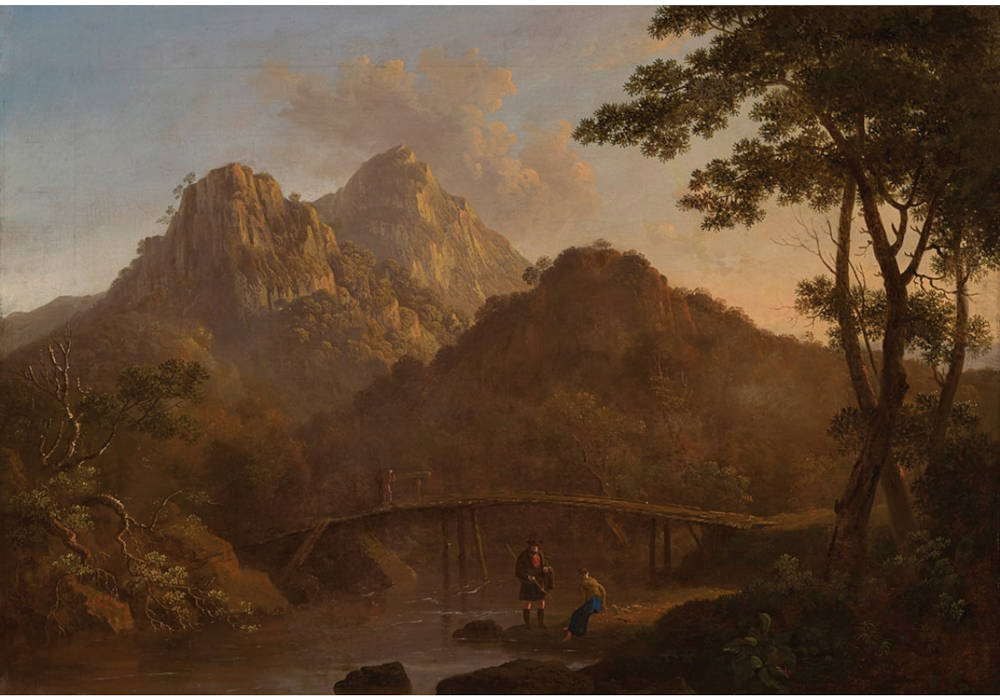
Mountains and wooden bridge in the Trossachs by John Knox (1778-1845). Oil on canvas, 25 ¼ x 35 ¼ inches. Provenance: Private collection, England. Courtesy of the Fine Art Society. [Click on image to enlarge it.]
Details
Commentary from the Fine Art Society
Knox was born in Paisley and subsequently moved to Glasgow; he was the son of a yarn merchant. Early on, his name appears as a portrait painter and a little later as a teacher of drawing. By 1821 the title “Landscape Painter” was added to this entry in the Glasgow Street Directory, and we know that Daniel MacNee, Horatio McCulloch, and William Leighton Leitch came to his Dunlop Street studio as pupils. In 1828 Knox moved to London where he exhibited works at the RA and British Institute. He returned to Glasgow in 1836 but moved to Keswick in 1840. Knox is known for his panoramic landscapes, in particular from the top of Ben Lomond. He also painted some of the earliest views of Glasgow. Although some of his details are scarce, Knox was certainly an important influence in the development of art in Glasgow, both as a teacher and a painter.
The dramatic light at the end of the day allowed Knox to give full three-dimensional form to the mountains and to spotlight the kilted man and lady in the foreground. This oil relates to a small, grey wash and pencil work on paper at the Scottish National Gallery where the light from the setting sun can be seen in more schematic form. The arrangement of the mountains, trees, bridge and spot-lit figures are reminiscent of a stage set. It is thought that he was a pupil of Alexander Nasmyth and although Nasmyth’s teachings in relation to his subject are clear, the treatment of it is quite different. Where Nasmyth’s landscapes roll out, Knox’s landscapes appear like a theatre set construction. Paintings like this, with such vivid light, are often supposed to be the product of artistic license; yet that may be to do Knox and his predecessor a disservice; light may indeed be as remarkable as this.
The Fine Art Society, London, has most generously given its permission to use information, images, and text from its catalogues in the Victorian Web Copyright on text and images from their catalogues remains, of course, with the Fine Art Society. [GPL]
Last modified 21 September 2021